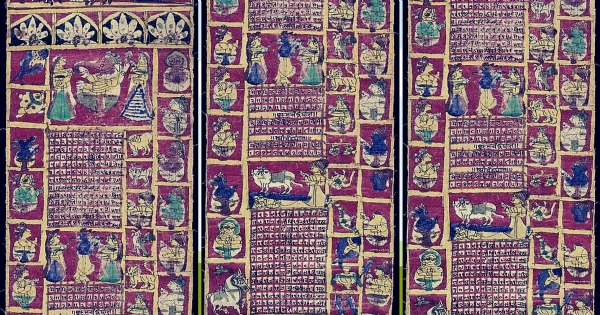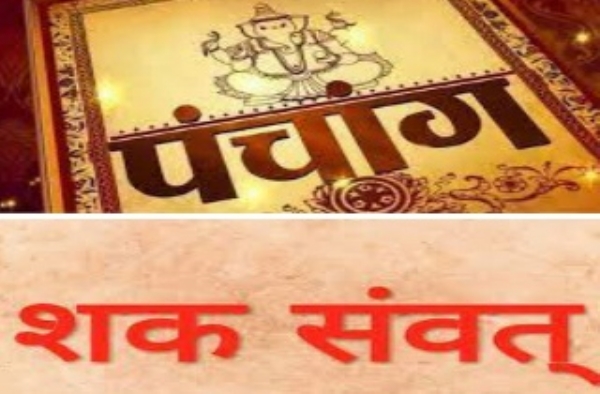Happy Hindu 'Shalivahan’ year, 1944: Story Behind India’s National Calendar
02 Apr 2022 10:11:18
With today's sunrise, we have entered the year 1944. Today is the first day of 1944. Happy New Year, guys!
Wait, what? How's that even possible? You must be confused. According to the English or Georgian calendar, it's the year 2022, right? As, today is not the 1st of January, then how can it be a new year? I know this is what you all must be thinking of. But, yes, we are leaving in 1944, not in 2022. It is the reality. If you want to know how, then this article is what you are looking for...

We have all heard of the Hindu calendar, or Panchag. Some of our grandparents are still using Panchang to check the time of the lunar eclipse and particularly to see Hindu festival dates. According to the lunisolar method of the Hindu calendar, which is also India's national calendar, today is the first day of the Hindu month of Chaitra, and from this month, the Hindu New Year begins. The day is known as Chaitra Sukhladi. The year 2022, according to the Saka Calendar, is 1944.
The first day of the Chaitra month is celebrated as New Year’s Day, known as Gudi Padwa in Maharashtra, Chaitra Vishu, and Ugadi in Karnataka and Andhra Pradesh.
Unlike the English calendar, where we celebrate the new year on the fixed date, here in the Hindu calendar, the first day was not fixed, it was decided on the basis of Nakshatra and Tithi. The specialty of the Hindu New Year is that it starts with the sunrise, whereas the English New Year starts at midnight.

Moreover, the western calendar is based on the sun, where a year is defined as the time taken by the earth to traverse one orbit around the sun, while the Hindu calendar is based on the moon’s movement around the earth.
Unlike the Gregorian calendar, which adds additional days to the month to adjust for the mismatch between twelve lunar cycles (354 lunar days) and nearly 365 solar days, the Hindu calendar adds an extra month, known as the Adhik Mas, to the year after every 30 months to cater for the loss of additional days because its years constitute of 28-day months.
Saka Samvat and Vikram Samvat are two commonly used calendars in India. Samvat is a term that is used to refer to an era that is described by the Indian calendar. Saka Samvat has been adopted as an official civil calendar by India. This Samvat started in 78 BC, whereas Vikram Samvat started in 57 BC. In both these Samvats, the complete calculation of time is done based on the moon.

Saka Samvat is believed to be based on the celebration that took place at the time of crowning Shalivahan king in 78 AD. While Vikram Samvat is often associated with Raja Vikramaditya of Ujjain, it is believed that this calendar follows his victory over the Saka in 56 B.C. The difference between Saka samvat and Vikram samvat is 135 years {57 BC~78 AD}.
Saka Samvat, starts from the first day of Chaitra Skukla paksha, whereas the second day of Diwali is celebrated as the first day of the Vikram Samvat calendar, which is the first day of the month of Kartik. The names of the months of Shaka and Vikram Samvat are the same, and both the Samvat also have Shukla Paksha and Krishna Paksha.
The calendar consists of 365 days and 12 months, like the normal Gregorian calendar. There are 12 months in Saka calendar which are named Vaisakha, Jyestha, Asadha, Sravana, Bhadrapada, Asvina, Kartika Margasirsa, Pausa, Magh, Phalgura, and Chaitra. Each Hindu month is divided into two 15 days i.e Kṛiṣṇa-Pakṣa (dark half) & Śukla-Pakṣa (light half). The Hindu names of the months are derived from the Nakshatra where the moon lies during its full moon day. The fifteenth day of Krishna paksha is called Amavas, and the fifteenth day of Shukla paksha is called Poornima.
There are different variations of the Hindu calendar that are used in India. Different tribes tend to use versions of the Hindu calendar that emphasise festivals that are important to their communities. For instance, the Malayalam calendar is used by Hindus who speak this language, while the Kannada Panchangam is used by Hindus of the Kannada tribe (Walker, 2014).
The Hindu calendar is so accurate that it can tell you the time of the lunar eclipse that will happen 1000 years from now. Today, a majority of urban youth is not at all familiar with the existence of calendars in Indian tradition. It is used, alongside the Gregorian calendar, by the Gazette of India, news broadcasts by All India Radio, and calendars and communications issued by the Government of India. Besides such formal purposes, the calendar is not very widely used.
.
.